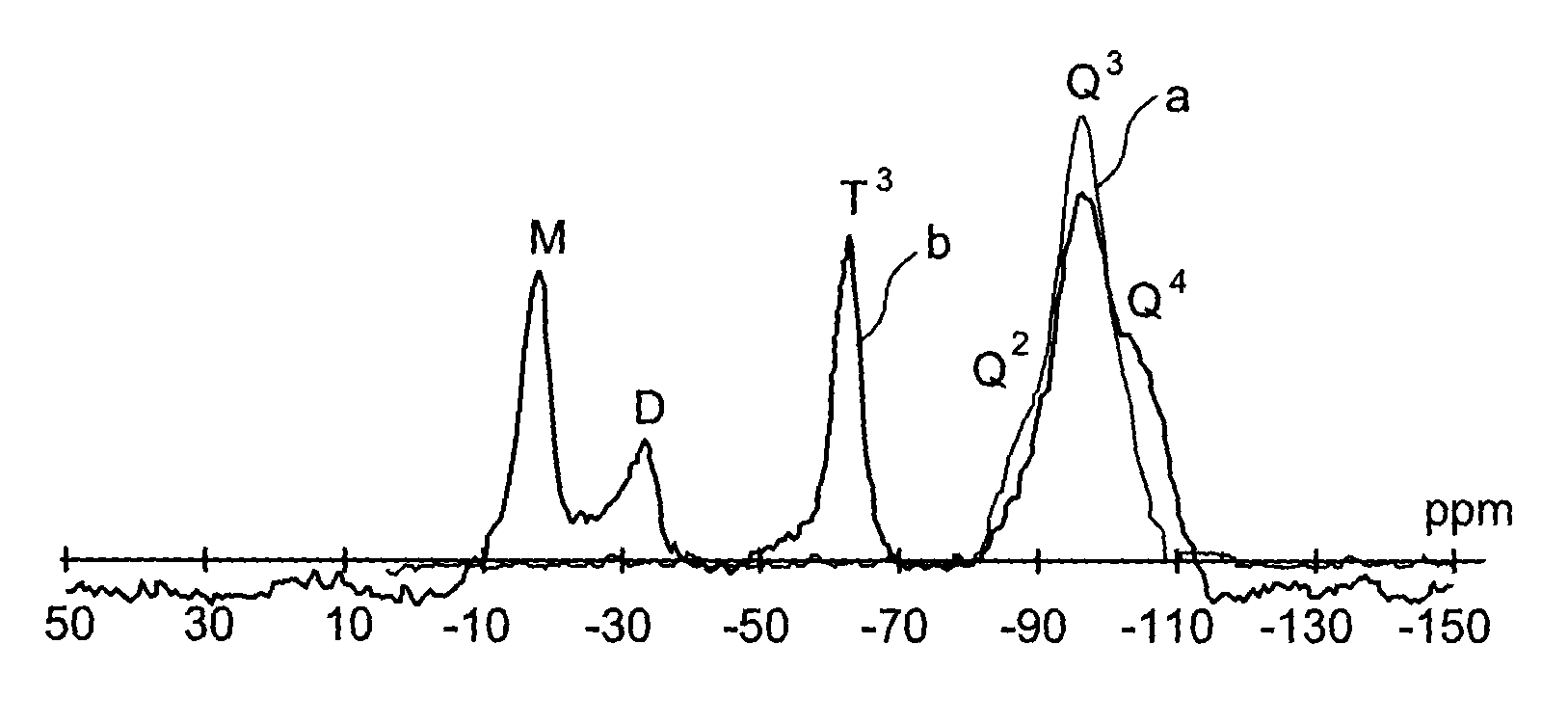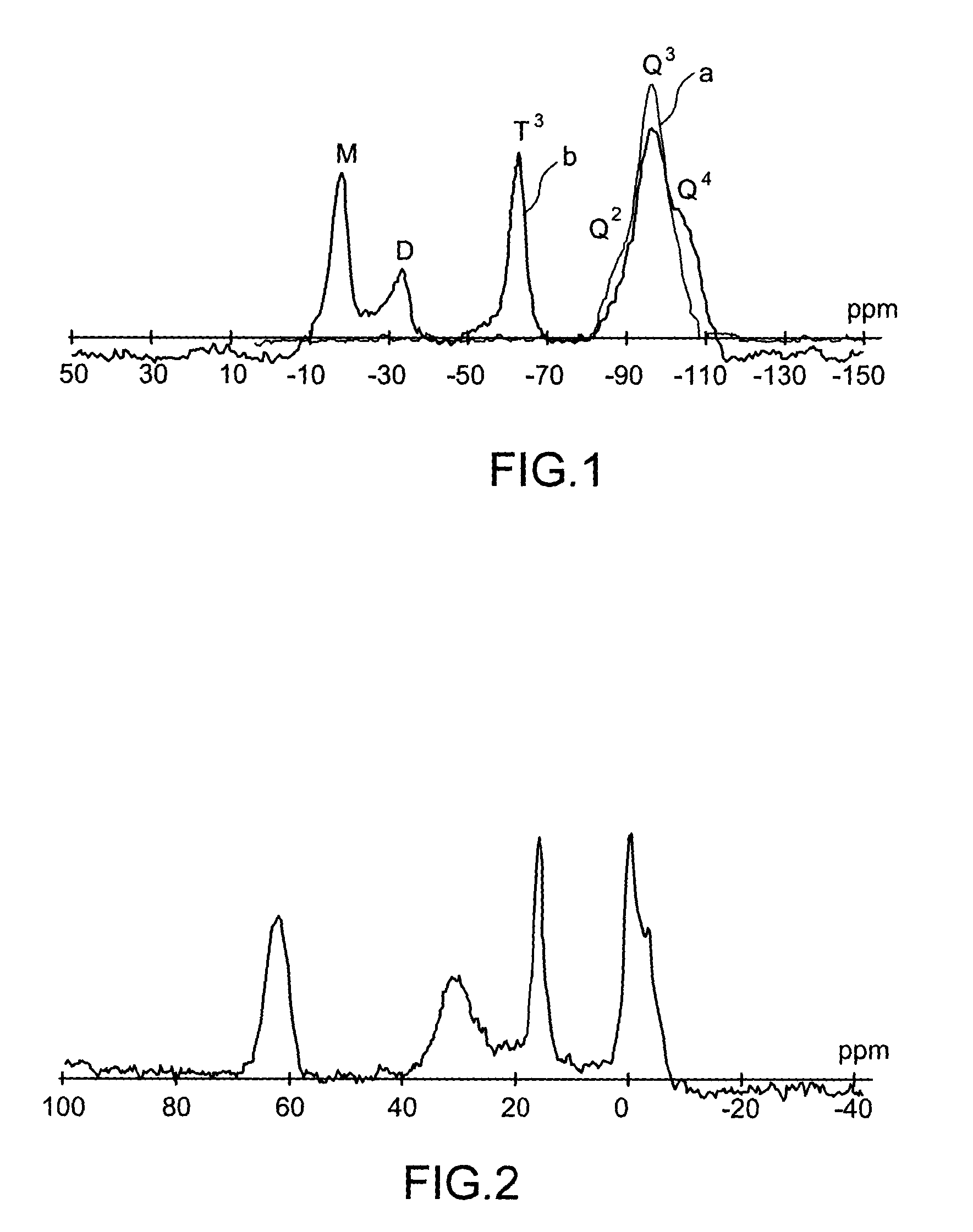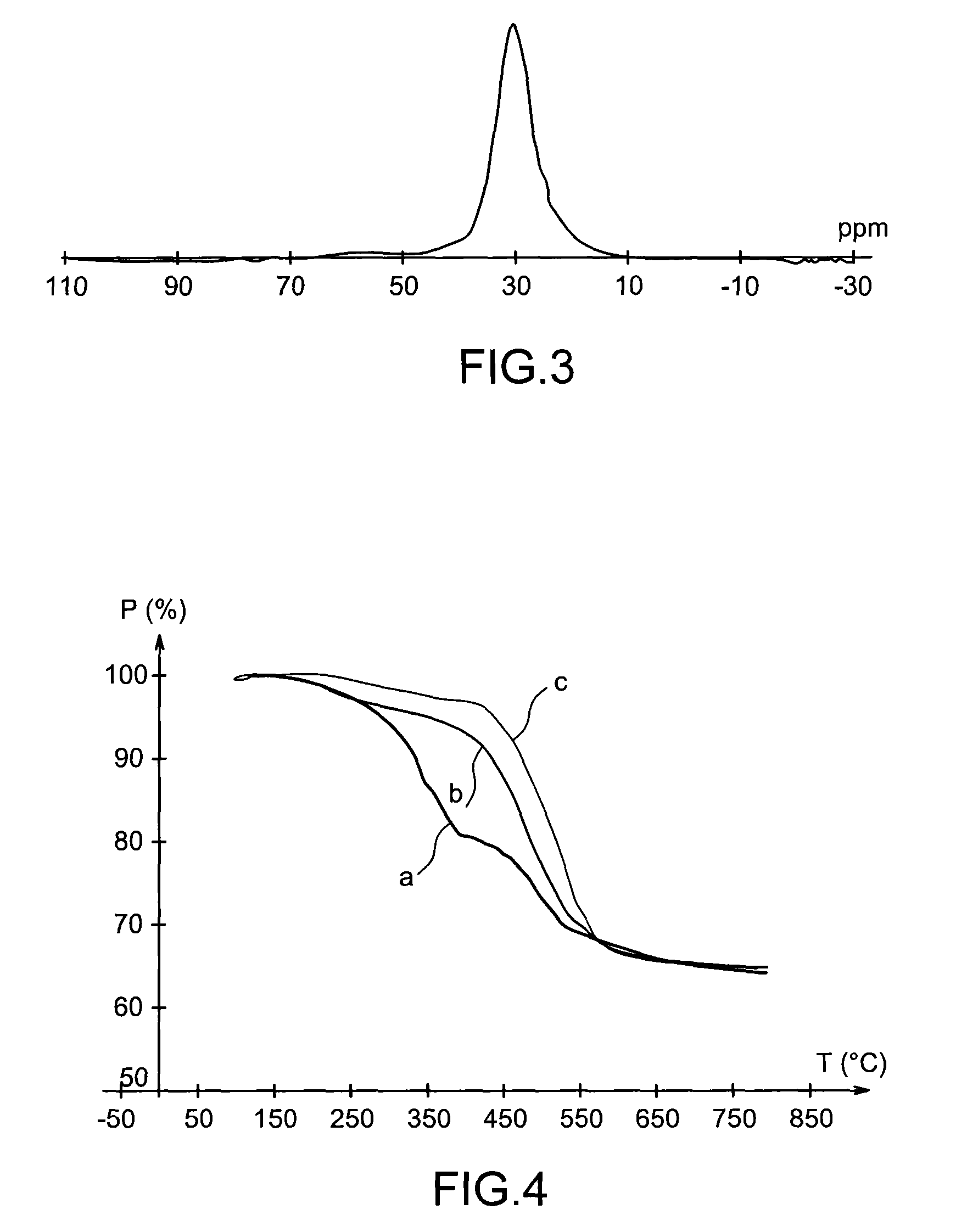Specific phosphonated copolymers and inorganic particles grafted by said copolymers
a technology of inorganic particles and copolymers, which is applied in the direction of fuel cells, pigment treatment with organosilicon compounds, and electrochemical generators, etc., can solve the problems of insufficient pemfc applications, insufficient life of interest, and inconvenient marketing of the products
- Summary
- Abstract
- Description
- Claims
- Application Information
AI Technical Summary
Benefits of technology
Problems solved by technology
Method used
Image
Examples
example 1
[0125]This example relates to the preparation of a polymer conforming to the invention resulting from the polymerisation of diethyl vinylphosphonate having the following formula:
[0126]
from a base copolymer: poly(hydromethyl-co-dimethyl)siloxane having the following formula:
[0127]
[0128]Diethyl vinylphosphonate (0.704 g; 4.3×10−3 mol) is added to the tube. In parallel, tris (pentafluorophenyl)borane (210 mg; 4.3×10−4 mol) is solubilised in toluene. The solution is then added to the tube. Next, pentadimethylsiloxane (0.190 g; 1.28×10−3 mol) is added. The temperature is then set at 50° C. About 15 minutes after adding the pentadimethylsiloxane, a strong release of gas is observed which starts to fade about 30 minutes later. Poly(hydromethyl-co-dimethyl)siloxane (1 g; 2.13×10−3 mol) is added at this precise moment. The reaction takes place for 16 hours at 85° C. On completion of the reaction, the reaction mixture is stored.
example 2
[0129]This example relates to the preparation of a polymer conforming to the invention resulting from the polymerisation of diethyl vinylphosphonate having the following formula:
[0130]
from a base copolymer: poly(hydromethyl-co-dimethyl)siloxane of following formula:
[0131]
[0132]Diethyl vinylphosphonate (0.704 g; 4.3×10−3 mol) is added to the tube. In parallel, tris(pentafluorophenyl)borane (210 mg; 4.3×10−4 mol) is solubilised in toluene. The solution is then added to the tube. Next, pentadimethylsiloxane (0.190 g; 1.28×10−3 mol) is added. The temperature is then set at 50° C. About 15 minutes after adding the pentadimethylsiloxane, a strong gas release is observed which starts to fade about 30 minutes later. The poly(hydromethyl-co-dimethyl)siloxane (2 g; 4.26×10−3 mol) is added at this precise moment. The reaction takes place for 16 hours at 85° C. On completion of the reaction, the reaction mixture is stored.
example 3
[0133]This example relates to the preparation of a polymer conforming to the invention resulting from the polymerisation of diethyl vinylphosphonate having the following formula:
[0134]
from a base copolymer: poly(hydromethyl-co-dimethyl)siloxane having the following formula:
[0135]
[0136]The diethyl vinylphosphonate (0.704 g; 4.3×10−3 mol) is added to the tube. In parallel tris (pentafluorophenyl)borane (210 mg; 4.3×10−4 mol) is solubilised in toluene. The solution is then added to the tube. Next, pentadimethylsiloxane (0.190 g; 1.28×10−3 mol) is added. The temperature is then set at 50° C. About 15 minutes after adding the pentadimethylsiloxane, a strong gas release is observed which starts to fade about 30 minutes alter. The poly(hydromethyl-co-dimethyl)siloxane (4 g; 4.56×10−3 mol) is added at this precise moment. The reaction takes place for 16 hours at 85° C. On completion of the reaction, the reaction medium is stored.
PUM
| Property | Measurement | Unit |
|---|---|---|
| temperatures | aaaaa | aaaaa |
| temperatures | aaaaa | aaaaa |
| operating temperature | aaaaa | aaaaa |
Abstract
Description
Claims
Application Information
 Login to View More
Login to View More - R&D
- Intellectual Property
- Life Sciences
- Materials
- Tech Scout
- Unparalleled Data Quality
- Higher Quality Content
- 60% Fewer Hallucinations
Browse by: Latest US Patents, China's latest patents, Technical Efficacy Thesaurus, Application Domain, Technology Topic, Popular Technical Reports.
© 2025 PatSnap. All rights reserved.Legal|Privacy policy|Modern Slavery Act Transparency Statement|Sitemap|About US| Contact US: help@patsnap.com



